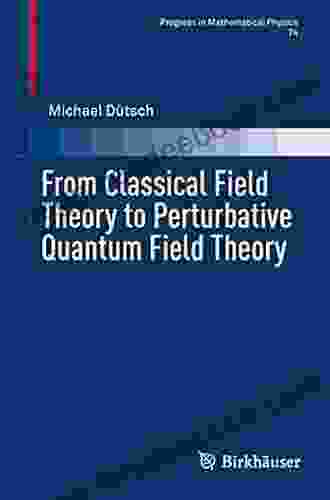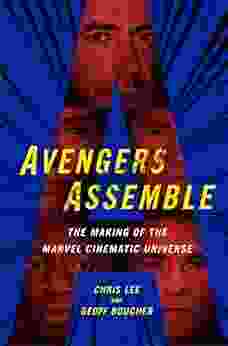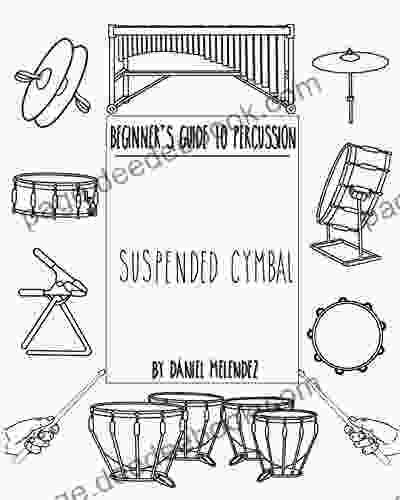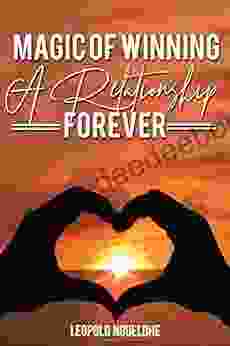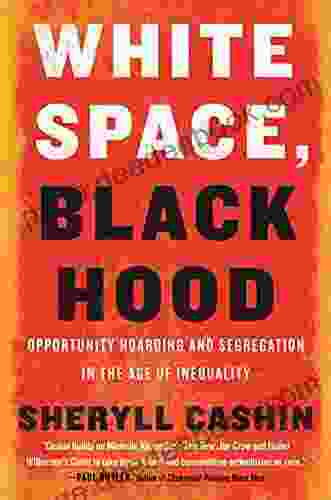From Classical Field Theory to Perturbative Quantum Field Theory: Progress in a Nutshell

5 out of 5
| Language | : | English |
| File size | : | 16314 KB |
| Screen Reader | : | Supported |
| Print length | : | 557 pages |
| Paperback | : | 32 pages |
| Item Weight | : | 2.72 ounces |
| Dimensions | : | 6 x 0.08 x 9 inches |
Field theory is a fundamental branch of physics that deals with the behavior of fields, which are physical quantities that exist at every point in spacetime. Classical field theory, which emerged in the 18th and 19th centuries, provided a powerful framework for understanding phenomena such as electromagnetism and gravity. However, it was not until the development of quantum mechanics in the early 20th century that a truly quantum field theory could be formulated.
Perturbative quantum field theory (pQFT) is a powerful tool for understanding the behavior of particles and fields at the quantum level. It is based on the idea that interactions between particles can be treated as small perturbations to a free-field theory. This allows physicists to calculate the effects of these interactions using a series of approximations.
Key Concepts in pQFT
The following are some of the key concepts in pQFT:
- Lagrangian formulation: The Lagrangian is a function that describes the state of a field at every point in spacetime. The equations of motion for the field can be derived from the Lagrangian using the principle of least action.
- Feynman diagrams: Feynman diagrams are graphical representations of the interactions between particles and fields. They are used to calculate the probability of different processes occurring.
- Renormalization: Renormalization is a technique used to remove infinities from the calculations of pQFT. It is essential for making pQFT a practical tool for physicists.
Challenges in pQFT
Despite its successes, pQFT also faces a number of challenges. These include:
- Strong interactions: pQFT is not well-suited for describing strong interactions, such as those between quarks and gluons. This is because the strong interactions are not well-approximated by small perturbations.
- Non-renormalizable theories: Some theories in pQFT are not renormalizable. This means that the infinities that arise in the calculations cannot be removed using renormalization.
- The hierarchy problem: The hierarchy problem is the problem of explaining why the weak force is much weaker than the strong force. pQFT does not provide a satisfactory explanation for this.
Progress in pQFT
Despite these challenges, pQFT has made significant progress in recent decades. Some of the most important developments include:
- The development of new renormalization techniques: New renormalization techniques have been developed that make it possible to calculate the effects of strong interactions more accurately.
- The discovery of new particles: The discovery of new particles, such as the Higgs boson, has provided further confirmation of the Standard Model of particle physics, which is based on pQFT.
- The development of new theoretical ideas: New theoretical ideas, such as supersymmetry and string theory, have been proposed to address the challenges of pQFT.
Perturbative quantum field theory is a powerful tool for understanding the behavior of particles and fields at the quantum level. It has been used to make many important predictions that have been confirmed by experiment. However, pQFT also faces a number of challenges. These challenges are being actively addressed by physicists, and there is reason to believe that pQFT will continue to make progress in the years to come.
References
- M. E. Peskin and D. V. Schroeder, An to Quantum Field Theory, Westview Press, 1995.
- S. Weinberg, The Quantum Theory of Fields, Cambridge University Press, 1995.
- C. Itzykson and J.-B. Zuber, Quantum Field Theory, Dover Publications, 2006.
5 out of 5
| Language | : | English |
| File size | : | 16314 KB |
| Screen Reader | : | Supported |
| Print length | : | 557 pages |
| Paperback | : | 32 pages |
| Item Weight | : | 2.72 ounces |
| Dimensions | : | 6 x 0.08 x 9 inches |
Do you want to contribute by writing guest posts on this blog?
Please contact us and send us a resume of previous articles that you have written.
 Book
Book Novel
Novel Text
Text Story
Story Reader
Reader Library
Library Paperback
Paperback E-book
E-book Magazine
Magazine Sentence
Sentence Shelf
Shelf Bibliography
Bibliography Synopsis
Synopsis Annotation
Annotation Footnote
Footnote Codex
Codex Tome
Tome Classics
Classics Narrative
Narrative Biography
Biography Memoir
Memoir Reference
Reference Dictionary
Dictionary Thesaurus
Thesaurus Narrator
Narrator Resolution
Resolution Librarian
Librarian Card Catalog
Card Catalog Borrowing
Borrowing Stacks
Stacks Archives
Archives Study
Study Journals
Journals Rare Books
Rare Books Special Collections
Special Collections Interlibrary
Interlibrary Study Group
Study Group Thesis
Thesis Reading List
Reading List Theory
Theory Kathleen G Winterman
Kathleen G Winterman Lucy Cousins
Lucy Cousins Kathy Hendricks
Kathy Hendricks Brian Copeland
Brian Copeland Grace Ji Sun Kim
Grace Ji Sun Kim Maria Rashid
Maria Rashid Deepak R Khemani
Deepak R Khemani Write Blocked
Write Blocked Herbert Warren Wind
Herbert Warren Wind Jeff Wolf
Jeff Wolf Jeannie Peneaux
Jeannie Peneaux Rob Thomas
Rob Thomas Regpub
Regpub George Gilder
George Gilder Erika Napoletano
Erika Napoletano Sherry L Deckman
Sherry L Deckman Wayne Clingman
Wayne Clingman Will Hillenbrand
Will Hillenbrand Jim Chevallier
Jim Chevallier Conner Hayden
Conner Hayden
Light bulbAdvertise smarter! Our strategic ad space ensures maximum exposure. Reserve your spot today!
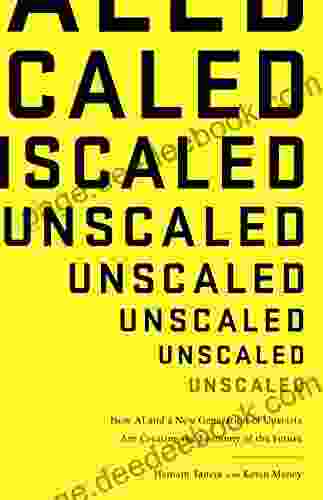
 Chandler WardHow AI and the New Generation of Upstarts Are Creating the Economy of the...
Chandler WardHow AI and the New Generation of Upstarts Are Creating the Economy of the... Julio Ramón RibeyroFollow ·8.1k
Julio Ramón RibeyroFollow ·8.1k Earl WilliamsFollow ·6.7k
Earl WilliamsFollow ·6.7k Ernest J. GainesFollow ·12.4k
Ernest J. GainesFollow ·12.4k Langston HughesFollow ·12.7k
Langston HughesFollow ·12.7k Leo MitchellFollow ·14.3k
Leo MitchellFollow ·14.3k Clinton ReedFollow ·16.2k
Clinton ReedFollow ·16.2k Jeffrey HayesFollow ·16.5k
Jeffrey HayesFollow ·16.5k Jamal BlairFollow ·8.9k
Jamal BlairFollow ·8.9k
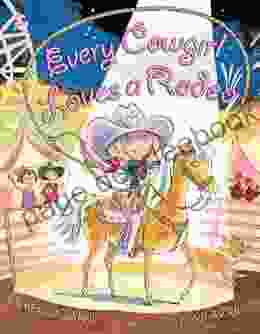
 Chandler Ward
Chandler WardEvery Cowgirl Loves Rodeo: A Western Adventure
Every Cowgirl...
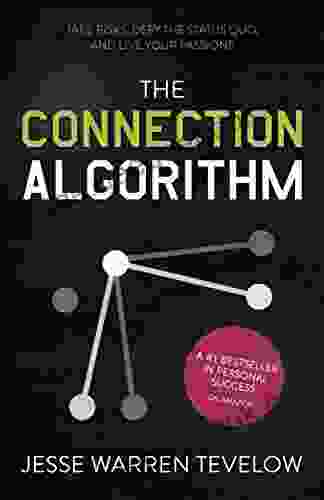
 Dylan Mitchell
Dylan MitchellThe Connection Algorithm: Take Risks Defy The Status Quo...
In the tapestry of life, we are often...
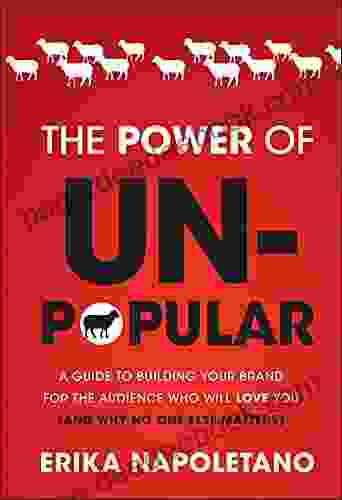
 Terence Nelson
Terence NelsonThe Ultimate Guide to Building a Beloved Brand: Unlocking...
In today's fiercely competitive market,...

 Warren Bell
Warren BellGoverning Metropolitan Regions in the 21st Century:...
Metropolitan regions are home to a majority of...
5 out of 5
| Language | : | English |
| File size | : | 16314 KB |
| Screen Reader | : | Supported |
| Print length | : | 557 pages |
| Paperback | : | 32 pages |
| Item Weight | : | 2.72 ounces |
| Dimensions | : | 6 x 0.08 x 9 inches |


